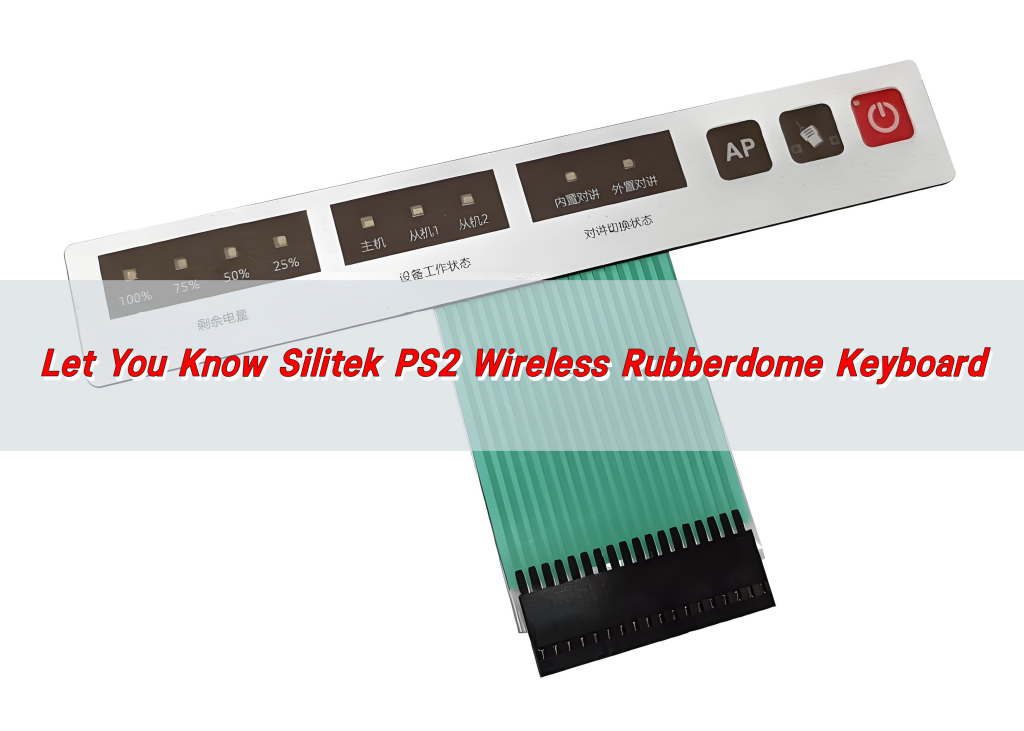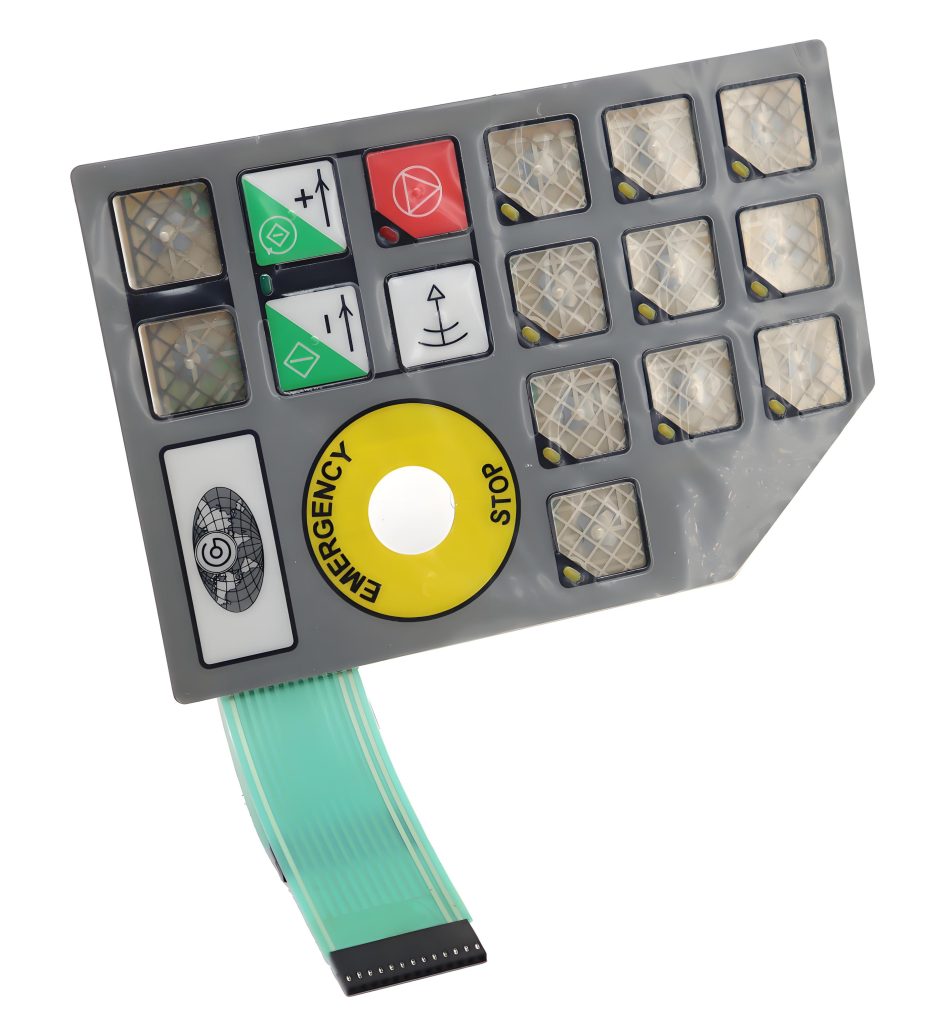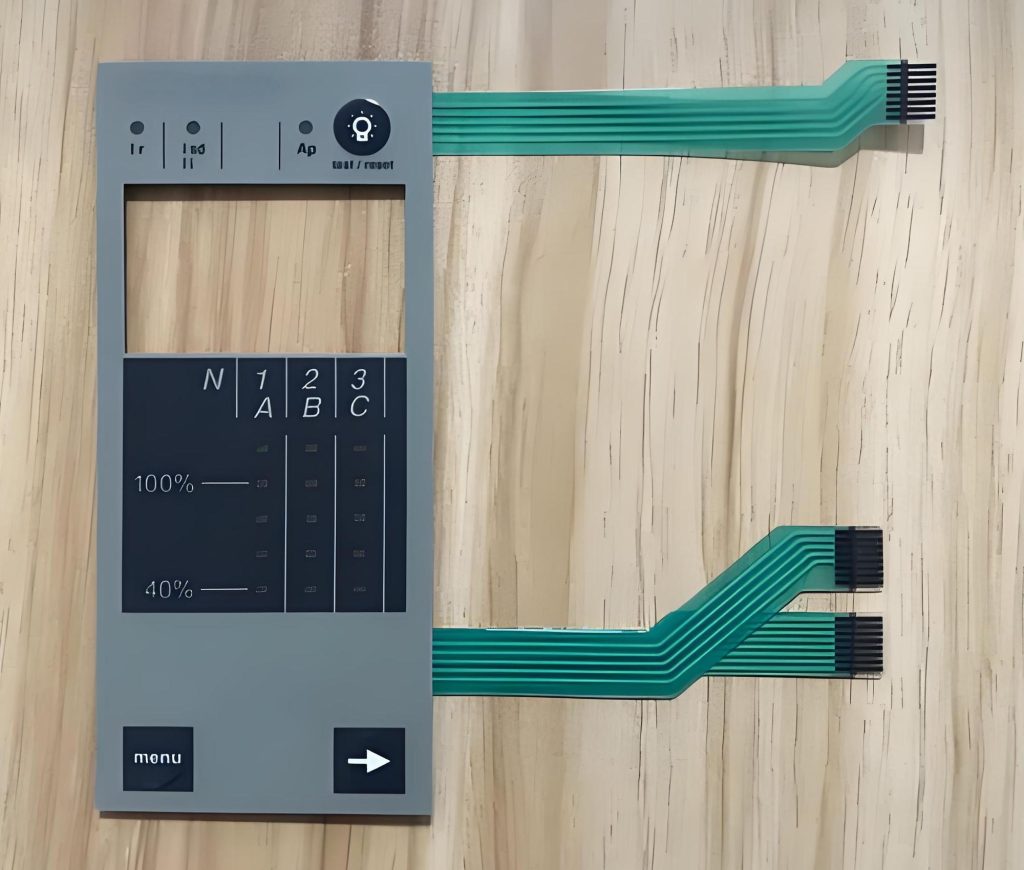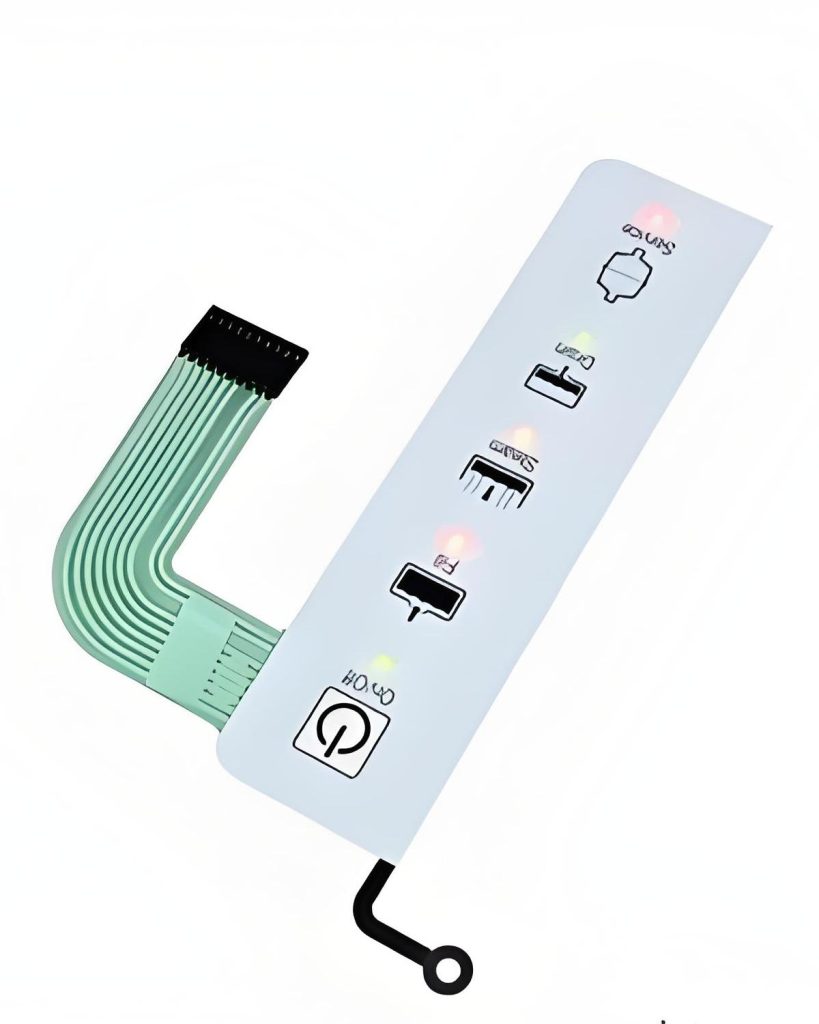
Let You Know Silitek PS2 Wireless Rubberdome Keyboard
Let You Know Silitek PS2 Wireless Rubberdome Keyboard
Silitek PS2 Wireless Rubberdome Keyboard is a keyboard that combines PS/2 interface and wireless transmission technology. It uses rubber dome as the elastic element of the key to provide a stable input experience. The PS/2 interface ensures stable signal transmission, while the rubber dome design brings good tactile feedback and a comfortable pressing experience.

What is a rubber dome keyboard?
What they actually refer to, especially in professional electronics, are metal dome keypads. These are sleek, low-profile switch panels using metal domes for actuation. The user presses on a surface, usually overlaid with a graphic or silicone layer. Underneath, a metal dome collapses and makes an electrical connection. That click is tactile and clear.
They’re also part of what’s called a membrane switch system, known for thinness and sealed designs.
Unlike mechanical switches or traditional rubber membranes, metal domes give fast, sharp feedback. This is why they’re popular in control panels, industrial machinery, and even medical equipment.
Are rubber dome switches tactile?
In the world of control interfaces, rubber dome switch usually points to metal dome switch systems with a silicone or poly overlay. These are highly tactile. The metal dome inside collapses with force and snaps back instantly. You feel every press.
This tactile sensation is critical in many industrial and medical fields. It reduces errors. You don’t have to second-guess if a command was registered. It either clicked, or it didn’t.

This sensation is far more controlled than a traditional keyboard. Plus, metal dome switches have high cycle life. Some last over 1 million presses per key.
So yes, rubber dome switches—as they apply to this technology—are not only tactile but extremely responsive and reliable.
What is the Silitek PS2 wireless rubberdome keyboard?
This isn’t a tool for gamers or writers. This is a device for system integrators, control interfaces, and environments where reliability matters more than appearance.
Built with metal dome technology, this keyboard offers a tactile, clicky feedback that you can feel in every press. It connects wirelessly and uses the PS2 interface, which many legacy systems still rely on.
Its wireless nature makes it suitable for settings where cables are either unsafe or inconvenient. Think medical carts, lab setups, test benches, or factory monitoring stations.
The design is often sealed with a silicone overlay, making it dustproof and spill-resistant. The surface is easy to clean. That’s especially important in medical or food processing environments.
Many users also refer to this type of keyboard as a silicone wireless keyboard, which points to the smooth, wipeable surface that often covers the metal dome structure beneath.
In short, it’s not a keyboard in the traditional sense. It’s a wireless metal dome interface designed for critical-use applications where performance can’t be compromised.
Advantages of Silitek PS2 wireless rubberdome keyboard
First, tactile response. Every key gives a consistent, satisfying snap.
Second, wireless convenience. No tangled cords. No limited range. It’s designed for systems that still use the PS2 protocol, which remains common in many industrial setups due to its speed and reliability.
Third, durability. Thanks to the metal dome construction, these switches outlast rubber-based ones by a long shot.
Fourth, sealed protection. The silicone layer provides excellent protection against dirt, spills, and dust. Cleaning is quick and easy.
Fifth, compact and sleek. It’s thin, lightweight, and portable. It fits into tight systems. No clunky mechanical frames or deep key wells.

Sixth, visual clarity. Many Silitek models come with laser-marked keys or printed overlays that resist wear. This ensures long-term readability in harsh environments.
And let’s not forget the user experience. When you press a key and it responds instantly, without lag or confusion, that creates confidence. In medical, lab, and industrial settings, that confidence is crucial.
Disadvantages of Silitek PS2 wireless rubberdome keyboard
This device also has a few limitations, though they’re minor.
One, it uses PS2 connectivity, which is not compatible with many modern devices without an adapter. However, in industrial environments, PS2 is often preferred for its direct hardware-level communication.
Two, the layout is fixed. These aren’t highly customizable like a touchscreen interface. But for systems that require reliable key placement, this is a strength rather than a flaw.
Three, the wireless signal may require pairing or manual setup. In highly congested signal environments, you might need to adjust channels.
But again, these points are small trade-offs compared to what you gain in responsiveness, durability, and ease of use.
Applications of Silitek PS2 wireless rubberdome keyboard
The sealed surface and tactile metal domes are ideal for medical carts, scanners, and patient interface systems. They’re easy to sanitize and give perfect feedback even through gloves.
In industrial settings, these keypads thrive in control rooms, machinery dashboards, and process automation systems.
Laboratories also benefit from this device. Precision, reliability, and easy wipe-downs are essential. The tactile feel helps lab techs avoid repeat entries or missed commands.

For testing and diagnostic tools, the Silitek model offers a reliable wireless input device that performs under pressure.
You’ll also find them in transport systems, kiosks, and food production lines.
Conclusion:
The Silitek PS2 wireless rubberdome keyboard is more than just a peripheral. It’s a high-quality, metal dome keypad built for environments where feedback, speed, and hygiene matter most.
With tactile response, long life, and sealed silicone surfaces, it delivers where others fail.
Want to learn more about how this kind of technology can support your systems? Contact us at sales@best-membraneswitch.com. We’ll help you choose the right solution for your project.

Know the Difference between Tactile and Non-Tactile Membrane Switching
When selecting the appropriate interface for a product, it can be wise to understand the differences between tactile and non-tactile membrane switches so that the engineer and the purchaser make a better decision. They are both very common in medical equipment, domestic appliances, and industrial equipment, though they do not present the same user experience. ...

Step-by-Step Guide to Selecting the Right Membrane Switch for Your Product
It is not easy to choose the appropriate interface for an electronic device with the number of various types of membrane switches. This is a basic, stepwise analysis to help product designers and manufacturers select the optimal choice. Step 1: Determine your Application Requirements Begin by making a list of locations where switches are used, ...

Top Membrane Switches for Home Electronics Projects in 2025
You can elevate your home electronic membrane switch project in 2025 with standout models such as the 4×4 Matrix 12 Keys Keypad from SOUSHINE, the rgb-enabled strip switches from Molex, and custom graphic switches by Panasonic. These switches offer slim profiles and reliable performance, making them easy to integrate into your DIY setup. You gain ...
Contact us online